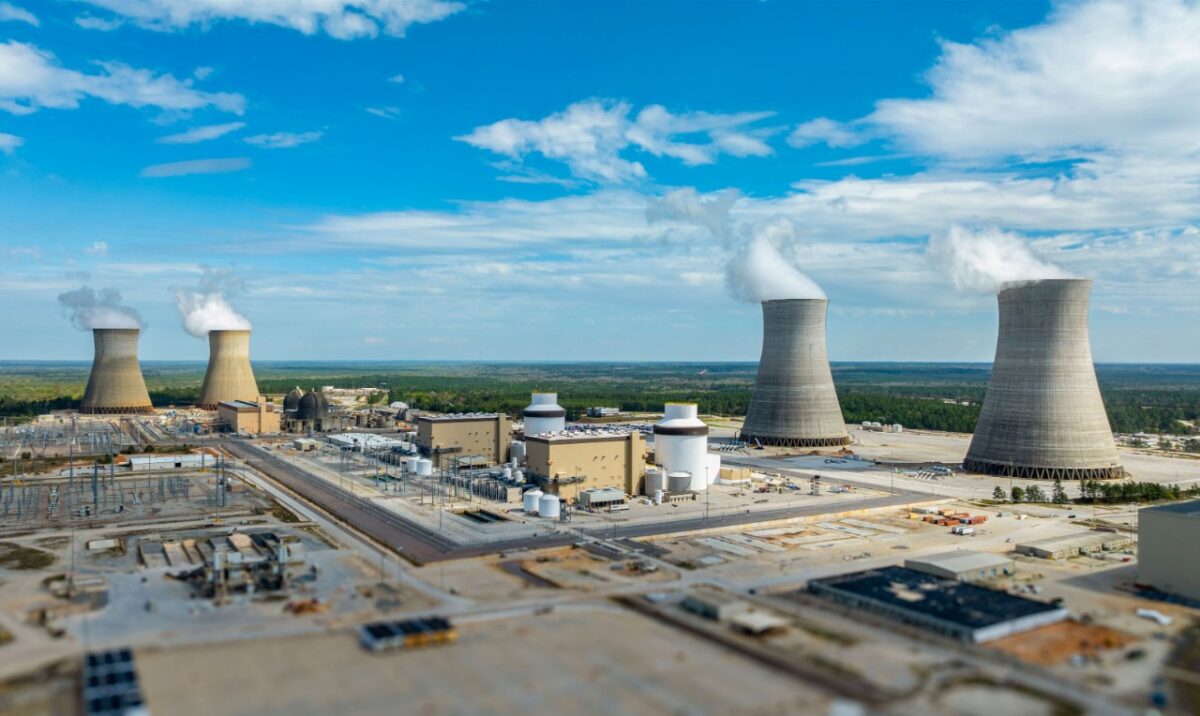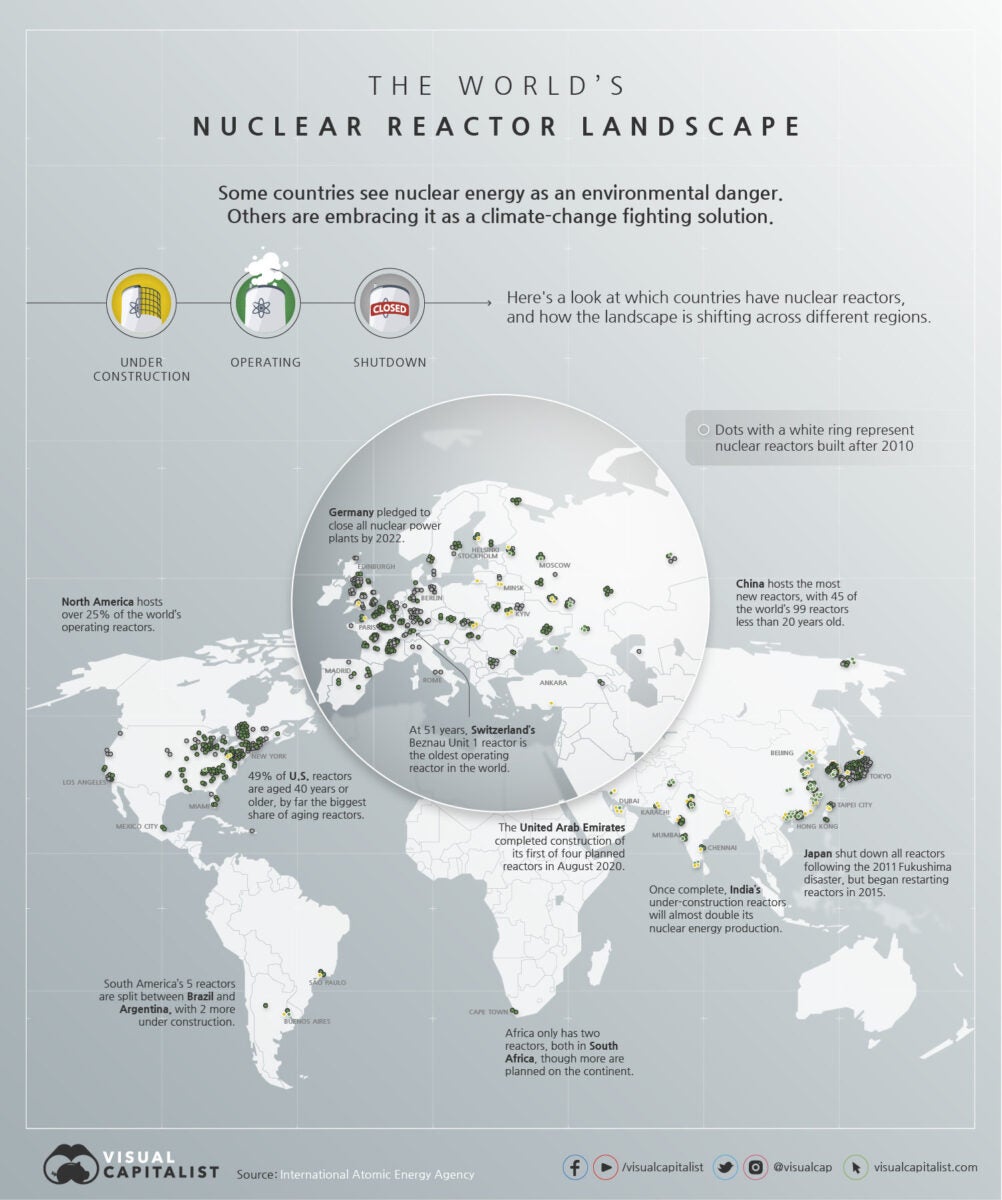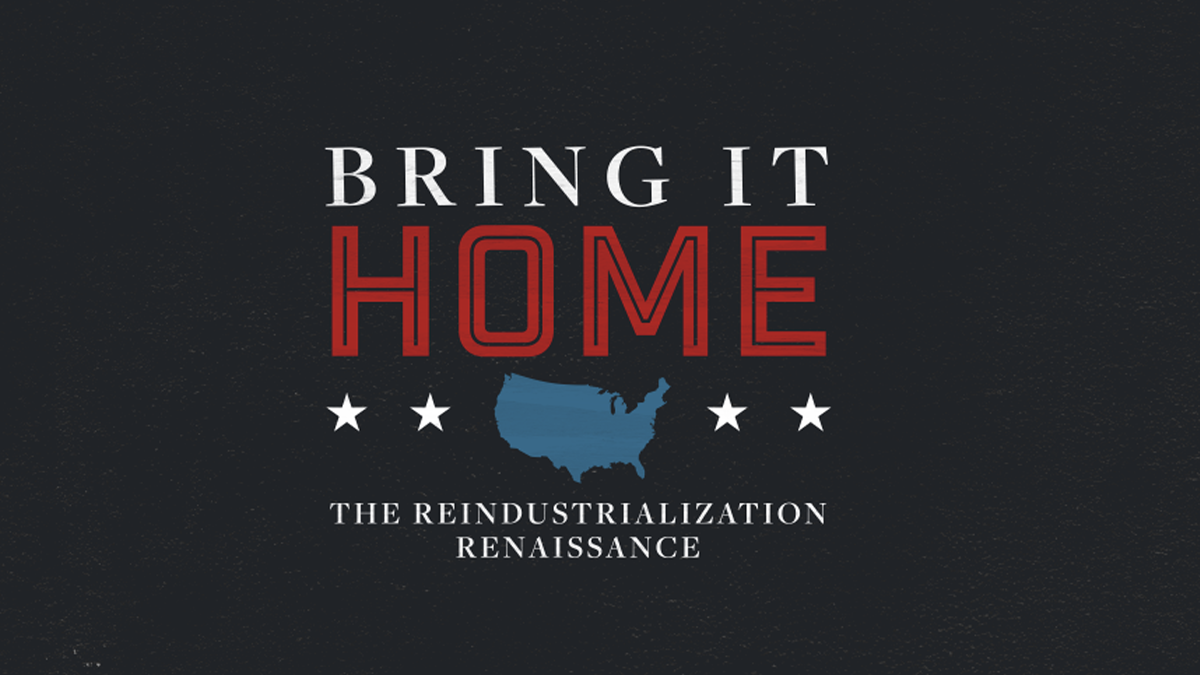The United States’ nuclear energy industry has long been a cornerstone of the nation’s power generation landscape. Beginning in the mid-20th century, the U.S. rapidly expanded its nuclear portfolio, driven by the promise of a virtually limitless, low-carbon energy source. And according to a new report by the International Energy Agency, 2025 will be a record year for nuclear power generation — but nuclear’s comeback wasn’t a sure thing.
This is JP Hampstead, co-host of the Bring It Home podcast with Craig Fuller. Welcome to the 11th edition of our newsletter, in which we take note of the shifting public — and regulatory — attitude toward nuclear energy.
By the 1970s and 1980s, nuclear power plants became integral to the country’s electricity supply, providing a stable and substantial portion of the nation’s energy.
However, over the past few decades, the momentum stalled. The construction of new nuclear power plants halted, leaving the U.S. without fresh additions to its aging fleet for over 30 years. This pause was primarily due to a confluence of factors including escalating construction costs, prolonged development timelines, public apprehension following incidents like Three Mile Island and Chernobyl, and the rise of cheaper and more flexible energy alternatives such as natural gas and renewables.
The cessation of new nuclear projects created a significant gap in U.S. energy infrastructure. Existing plants, many nearing the end of their initial operating licenses, faced the dual challenges of maintenance and eventual decommissioning without adequate replacements. This stagnation not only limited the growth of the nuclear sector but also impeded the country’s ability to leverage nuclear energy as a key driver for economic and industrial revitalization.

(Plant Vogtle, near Waynesboro, Georgia. Photo: Southern Nuclear)
Nuclear power holds distinct advantages that make it exceptionally well suited to support the United States’ reindustrialization efforts. Unlike intermittent renewable sources like wind and solar, nuclear power provides a consistent and reliable energy output. Nuclear reactors operate at high capacity factors, often exceeding 90%, meaning they produce maximum power more than 90% of the time. (Compare that to 34.5% for wind and 25% for solar.) This reliability ensures that industries receive a steady supply of electricity, critical for manufacturing processes that cannot tolerate energy fluctuations. Nuclear energy generates large amounts of power from a single facility, making it highly efficient in meeting the substantial energy demands of heavy industries.
Reindustrialization necessitates abundant and affordable energy to rebuild and expand the manufacturing sector, create jobs, and drive economic growth. A few weeks ago, we covered the deindustrialization of Germany and explored how it coincided with de-nuclearization and subsequent energy crises in the country. In this context, nuclear power emerges as a pivotal element. Its capacity to deliver high-density, low-carbon energy aligns perfectly with the goals of modernizing the industrial base while adhering to stringent environmental standards. As the U.S. seeks to regain its competitive edge in global manufacturing, the integration of nuclear energy into the national grid becomes indispensable.
To harness these benefits and reinvigorate the nuclear sector, the role of the Nuclear Regulatory Commission (NRC) is more critical than ever. The NRC serves as the federal body responsible for regulating nuclear power plants, ensuring their safe and secure operation. Facilitating the approval and construction of new nuclear facilities requires a delicate balance between maintaining rigorous safety standards and fostering an environment conducive to efficient project development.
Lately the balance has been shifting away from extreme, prohibitive safetyism to an attitude that would facilitate and enable nuclear energy. AI data centers are now emerging as a distinct new market for nuclear energy, especially from a new generation of small modular reactors.
The NRC recently updated its mission statement to reflect that, and new Commissioner David Wright, just appointed by President Donald Trump, has emphasized that he wants the commission to be part of the solution.
One notable example is the Vogtle Electric Generating Plant in Georgia. Vogtle Units 3 and 4, which came online in 2023 and 2024, are the first new nuclear reactors to be constructed in the U.S. in over three decades. Managed by Southern Co. through its subsidiary Georgia Power and built by Bechtel, these reactors signify a renewed commitment to nuclear energy. The NRC’s streamlined review processes and supportive regulations have been instrumental in bringing Vogtle to fruition, despite the complexities and challenges inherent in developing new nuclear technology.
Similarly, the Natrium project in Wyoming, spearheaded by TerraPower and Bechtel, represents a forward-thinking approach to nuclear energy. Natrium is a novel small modular reactor (SMR) that incorporates advanced sodium-cooled fast-reactor technology alongside molten salt energy storage. Approved by the NRC, this project is set to begin construction shortly, aiming for operational status by the early 2030s. The NRC’s role in facilitating the approval and oversight of such innovative projects is pivotal in demonstrating that nuclear power can evolve to meet contemporary energy needs while adhering to the highest safety standards.
The NRC can play a pivotal role in expanding the nuclear energy sector in the U.S. by implementing a range of strategic actions. First, by enhancing the efficiency of permit reviews and reducing bureaucratic delays, the NRC can accelerate the timeline for bringing nuclear projects online. This requires adopting flexible regulatory frameworks that accommodate technological advancements while maintaining safety standards. Supporting innovation is also crucial, particularly when it comes to the development and deployment of SMRs and advanced reactor designs. The NRC can facilitate this by creating pathways for faster licensing of these innovative technologies and providing clear guidelines to help developers meet safety and operational requirements. Collaboration among government entities, private companies and research institutions is also vital for driving nuclear innovation. The NRC can act as a coordinator, ensuring that regulatory frameworks are conducive to these partnerships, which are essential for the development and deployment of new nuclear technologies.
Massively increasing the United States’ nuclear power production is not merely a return to an old energy strategy but a crucial component of reindustrialization. Nuclear energy’s unmatched reliability and high power output make it indispensable for revitalizing the manufacturing sector and driving economic growth. The NRC’s proactive facilitation of new plant approvals and support for innovative projects like Vogtle and Natrium are essential steps toward realizing this vision, and a hopeful sign that the United States has turned the corner on nuclear energy policy.
Wind and solar are part of the United States’ energy strategy, especially for mitigating carbon emissions, but they cannot produce enough reliable power to meet the demands of the 21st century by themselves. For that, we must split atoms.
Quotable
“The [Nuclear Regulatory Commission] protects public health and safety and advances the nation’s common defense and security by enabling the safe and secure use and deployment of civilian nuclear energy technologies and radioactive materials through efficient and reliable licensing, oversight, and regulation for the benefit of society and the environment.” (Emphasis added.)
– Mission statement of the NRC, updated on Jan. 28, 2025, as ordered by the Accelerating Deployment of Versatile, Advanced Nuclear for Clean Energy (ADVANCE) Act, signed into law by President Joe Biden in July 2024.
President Trump’s new NRC commissioner, David Wright, has said the NRC should “position itself to be part of the solution.”
Infographic

News from around the web
Growth in Texas manufacturing picks up pace in January; outlooks improve further
Texas factory activity picked up notably in January, according to business executives responding to the Texas Manufacturing Outlook Survey. The production index, a key measure of state manufacturing conditions, rose seven points to 12.2.
Other measures of manufacturing activity also moved higher this month. The new orders index rose 6 points to 7.7, its highest level since April 2022. The capacity utilization and shipments indexes moved up to 5 and 8.7, respectively, after near-zero readings in December.
China Jan manufacturing activity unexpectedly contracts, hits five-month low
China’s manufacturing activity unexpectedly contracted in January, an official factory survey showed on Monday, its weakest since August, keeping alive calls for stimulus in the world’s second-largest economy.
The official Purchasing Managers’ Index contracted to 49.1 in January from 50.1 in December, below the 50-mark separating growth from contraction and missing a median forecast of 50.1 in a Reuters poll.
Opinion: Congress must take action to keep Alabama’s manufacturing sector protected
Manufacturing is central to Alabama’s economy as the sector accounts for nearly one-fifth of the state’s GDP, generates more than $40 billion in annual economic output, and provides nearly 300,000 Alabama workers with high-quality, good-paying jobs.
Irrefutable evidence proves that Alabama manufacturers are winning on the international stage. The state now ships goods to nearly 200 countries and is the nation’s No. 1 auto exporter.







